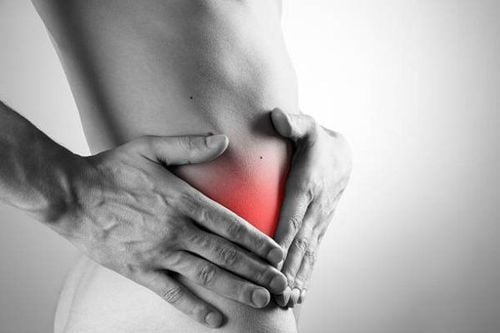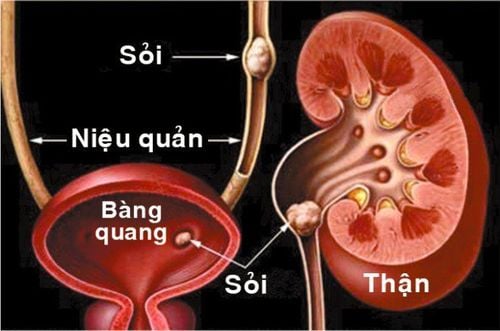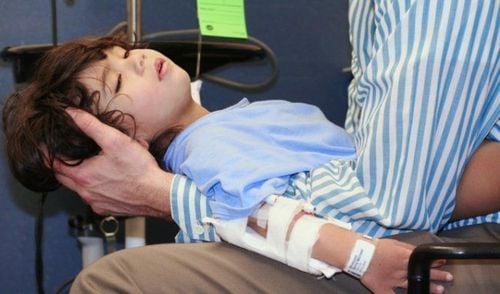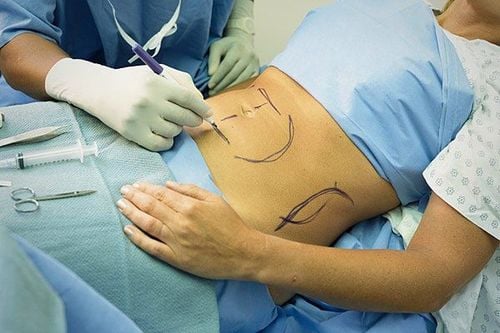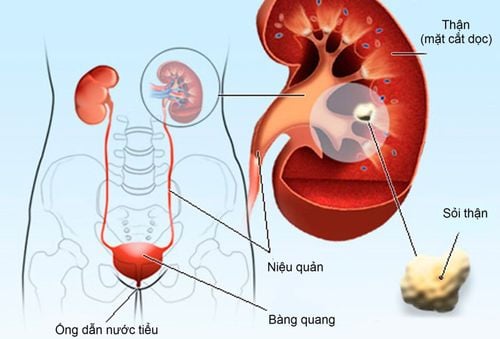This is an automatically translated article.
The article was professionally consulted by a Doctor Urologist - Department of General Surgery & Anesthesia - Vinmec Hai Phong International General Hospital.
Kidney stones are a common disease and cause many dangerous complications. The disease is more common in people between 40 and 70 years of age. Percutaneous renal lithotripsy is one of the methods to treat kidney stones with a size > 1.5cm
1. Treatment methods for kidney stones
Kidney stones are one of the most common urinary tract diseases. Kidney stones form due to the deposition and crystallization of minerals present in the urine. There are many causes of kidney stones, the most common of which are unhealthy eating habits, lack of exercise and poor water habits. Depending on the time of formation, location and degree of sedimentation, kidney stones will have different sizes.
Kidney stones account for half of all urinary tract diseases. Kidney stones, if not treated properly, can lead to serious complications such as pus, fluid retention, infection, kidney failure and even death.
For cases of kidney stones that do not cause urinary tract dilatation complications, the patient can take medicine as prescribed by the doctor. The doctor can prescribe some drugs to dissolve the stones that contain urate or cystine..
If the stone is larger, the patient needs to be treated with surgical measures. Currently, kidney stones can be treated by the following methods:
Standard endoscopic percutaneous lithotripsy (Standard PCNL) This is a highly effective method, limiting invasiveness. This method can completely replace open surgery for all stones > 25mm, especially "coral" stones. Patients will be under general anesthesia, less trauma to the end, less pain, surgery scar < 1 cm, short hospital stay.
Endoscopic minimally percutaneous lithotripsy (Mini PCNL) Minimally percutaneous endoscopic lithotripsy is very effective in cases of stones from 15-25 mm, ureteroscopy or lithotripsy has failed. .
Ureteroscopy The doctor will use a very small ureteroscope to pass through the urinary opening, up the ureter to access the stone. The doctor will then use a laser to break up the kidney stone. The stones will be sucked out with a ureteroscope. The ureteroscopy method does not cause scarring, reduces pain and shortens the hospital stay.
Extracorporeal lithotripsy (ESWL) This method is applicable for stones <15mm. The doctor will use shock waves to break up the stone. The fragments of the stone will be expelled with the urine. The lithotripsy method is effective from 55 to 85% and the hospital stay is only 1⁄2 days.
2. Percutaneous kidney stone lithotripsy at Vinmec Hai Phong

Percutaneous kidney stone lithotripsy is a new technique, applied by Vinmec International General Hospital since 2017, until now, it has been deployed in the Vinmec system, which is gradually becoming a routine technique.
2.1 Indicated subjects All kidney stones with size > 1.5 cm, especially with recurrent stones after open surgery. Large stones at the junction of the ureter with the renal pelvis. The stones were dispersed outside the body many times but failed. The stones are associated with urinary malformations (Narrowing of the ureteropelvic junction, renal calyx stenosis...). Anatomically abnormal kidney stones: horseshoe kidney, twin kidney... The above indications apply to functional kidney stones. 2.2 Contraindications Elderly and frail patients with comorbidities such as: High Unstable blood pressure, heart disease. Uncontrolled blood clotting disorders...
Relative contraindications in patients taking anticoagulants. Acute urinary tract infection, acute pyelonephritis
2.3 Outstanding advantages of this method Percutaneous endoscopic nephropathy allows a complete alternative to open surgery in surgical treatment of urinary stones, especially effective with "Coral" gravel; recurrent stones after open surgery; The stone was dispersed outside the body but failed and the stone was associated with urinary malformation.
Percutaneous endoscopic nephrectomy is the first choice for kidney stones larger than 2 cm. The surgery is performed through a small incision about 0.5 - 1 cm in the back skin on the side with stones.
Basic advantages of endoscopic percutaneous renal lithotripsy include: allowing the treatment of large stones, complex stones by a minimally invasive method that previously required open surgery with a large tear.
The hospital stay is about 3-5 days and the time to recover and return to work after surgery is much shorter than open surgery.
2.4. Procedure (steps) Step 1: Under ultrasound guidance, insert a needle into the kidney Step 1: Dilate small tunnel, place amplast Step 1: · Laser lithotripsy Step 1: Place drainage kidney via amplast Normal expression after percutaneous lithotripsy: The patient has almost little pain. The patient can walk and self-clean on the first day after surgery; High gravel clean rate; The hospital stay is only 2-3 days and very soon return to daily activities.
Abnormal manifestations: Blood in the urine; Leakage of urine through the incision; Fever.
3. Why should this technique be done at Vinmec?

Percutaneous renal lithotripsy at Vinmec Hai Phong is performed by a team of experienced doctors who are proficient in each surgical step.
Imaging system, Karl storz endoscope system, Sphinx 100w laser diffuser ·
Very good level of anesthesia, anesthesia and postoperative pain relief, helping patients quickly recover health and return to life daily life.
Customers who need consultation and treatment with Percutaneous Renal Lithotripsy at Vinmec Hai Phong International General Hospital can contact HOTLINE : (+ 84 22) 57309 888 or register HERE




